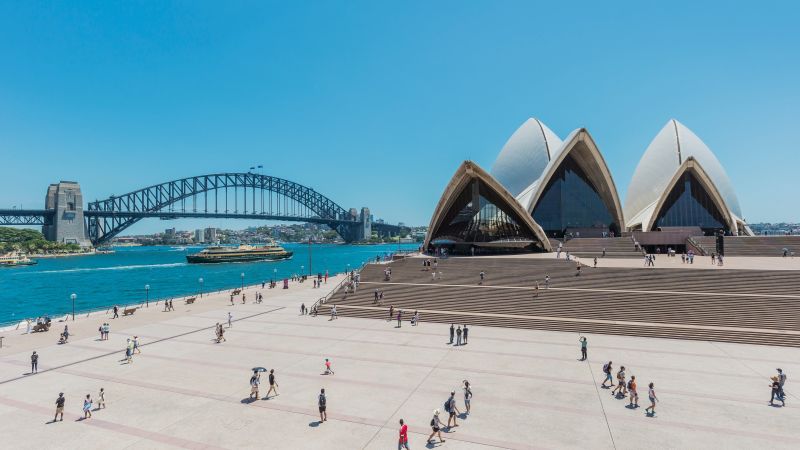Editor’s Note: Coronavirus cases are in flux across the globe. Health officials caution that staying home is the best way to stem transmission until you’re fully vaccinated. Below is information on what to know if you still plan to travel, last updated on June 10.
If you’re planning a trip to Australia, here’s what you’ll need to know and expect if you want to visit during the global coronavirus pandemic.
Australia reopened its borders to fully vaccinated tourists on February 21, having previously had some of the most stringent entry regulations on the planet.
However, this doesn’t mean the entire country is a free-for-all. Those border regulations are at a national level. Once you’re in the country, different states and regions have their own regulations, including testing requirements which were dropped at a national level on April 18.
Are you looking for wild open spaces? World-class beaches? A thrumming food and drinks scene? Australia has all of that in spades. From Uluru to the Sydney Opera House, its icons span the Outback to the cities, sacred spaces to cultural centers. Plus, of course, there’s that laidback, beach-driven lifestyle.
Australia opened its borders to fully vaccinated tourists on February 21, although the different states have different requirements (see below).
A ban on cruise ship entry ended April 17.
All arrivals to Australia, other than those from the countries listed below, must be fully vaccinated – with the final vaccination having taken place more than a week before travel. A certificate in English must be presented, with the vaccine brand name, dates of vaccination, and passport name and date of birth (or passport number) of the traveler.
Since April 18, there is no need to present a negative pre-departure test. However, arrivals must still complete a Digital Passenger Declaration within 72 hours of departure, and masks must be worn on flights into the country. Be aware that you may still need to test to enter any transit countries en route.
If arriving by sea, you must complete a Maritime Travel Declaration instead of a Digital Passenger Declaration.
Children under 11 are treated as if they are fully vaccinated. Those aged 12 to 17 are treated as such if they are traveling with at least one fully vaccinated adult. Be aware that individual state regulations may require unvaccinated children to quarantine on arrival – you can check individual states’ requirements here. Children under 11 don’t need to wear a mask on the flight to Australia.
The previous strict quarantine regulations have been dropped at a national level, meaning that individual states and territories must take their own decisions. See “Testing and quarantining on arrival” on this page from the Australian government’s website for details, state by state. For instance, both New South Wales and South Australia require an antigen test within 24 hours of arrival and isolation until you receive the result. Queensland has the same rules, but mandates that you must use private transport to your place of isolation, while Western Australia limits travel to remote Aboriginal communities until June 15, after which date communities may still impose their own restrictions.
Australian citizens and permanent residents do not have to be vaccinated to enter the country. For medical exemptions for unvaccinated visitors, see here.
Level 3: High. Make sure your vaccines are up to date. There have been nearly 7.6 million cases and 8,959 deaths as of June 10.
Digital Passenger Declaration
Covid-19 travel restrictions
Travel exemptions
Travel FAQs
Australia is a country of superlatives. Start with our list of essential places to go, or check out what we think are the most beautiful places in Australia. Are you really into Instagram? You’ll want to visit Perth, and its specially designated Instagram shed.
And if you’re feeling sentimental, here’s a story about a couple who met by chance on Byron Bay.
Read the full article here


